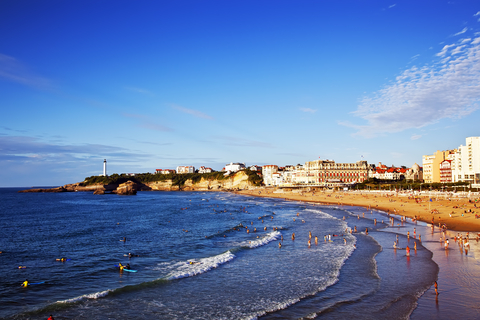Focus: Bathing areas in France
Every year, the European Environment Agency publishes a report on bathing water quality in France. This year, 74 out of 3222 registered bathing areas turned out to have a poor water quality; 15 of them are located in Brittany. Brittany’s poor quality of bathing water is due to the proliferation of green seaweed which results from a high nitrate concentration (agricultural source). South of France has better quality of bathing areas: the beaches of Lacanau (33) and Nice (06) showed for example an improvement of 2% compared to last year.
To monitor the bathing water quality, laboratories analyze the level of bacteria types, which may indicate the pollution presence due to waste livestock or wastewater. To let people know the water quality in each bathing area, mayors communicate the results published by the Regional Health Agencies (ARS). The results appear in different interpretations:
- “good quality” water,
- “medium quality” water,
- “temporarily polluted”,
- “poor quality” water
The question that must be asked is: does the rather average quality of French waters can affect the bather’s health?
It is not the case for medium quality water but the presence of bacteria such as Escherichia coli and intestinal enterococci can cause health problems such as wound infections, gastroenteritis, or ENT or eye disorders.
However in polluted waters, it is possible to find bacteria that are more dangerous, as staphylococci, in which case there would be a beach closure.
Furthermore, the beaches are organized and equipped materially within the limits of monitored areas to ensure the swimmers safety. Three flag colours are used to inform bathers:
- The red flag prohibits swimming,
- The yellow/orange flag indicates that swimming is dangerous but supervised,
- The green flag indicates that swimming is supervised and that no danger is to report
If you want to plan your holiday place according to the water quality of the area, you can see in real time the water pollution level on the Health Ministry website or via the Smartphone application WISE (Water Information System for Europe).


